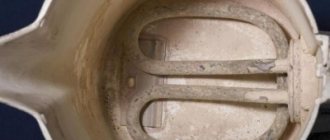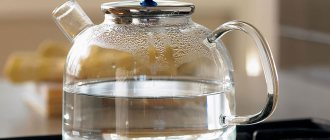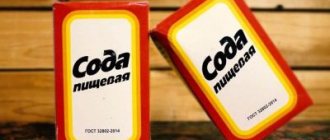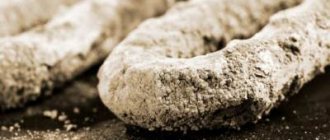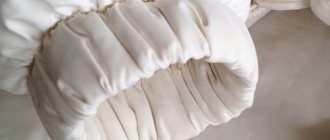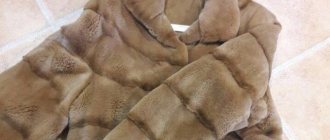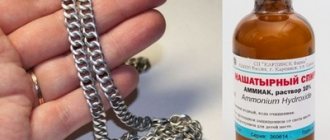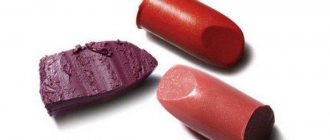Perishable equipment, white residue on the walls of the kettle or dry skin are just some of the negative consequences of using too hard water. The culprit is two elements - calcium and magnesium. However, this does not mean that they cannot be dealt with at home.
Hard water, which causes limescale on your kettle, is a common problem in many households across the country. This difficulty occurs at different scales in different geographic regions.
The hardness of an aqueous solution is determined by the geological composition of the rocks through which it flows. The hardness level can be checked in a laboratory, using the services of special companies, or doing the test yourself. And even faster, the presence of impurities in water can be seen at home on kitchen appliances.
Why does scale appear in a kettle?
Let’s say right away that scale is, alas, an inevitable evil. Where does it come from? Scale is the result of a chemical reaction of salts contained in water from heating. They settle on the walls of the dishes and form a coating called scale. If scale has formed, it means that the water contains calcium and magnesium, which are necessary for the human body. So by the amount of scale you can judge the usefulness of water. And by the color of the scale you can determine the chemical composition of the liquid:
- white – water is rich in calcium and magnesium salts;
- bright white – too much chlorine;
- a reddish tint of scale indicates an excess of iron in the water.
The harder the water, the faster and thicker the scale forms. If the water does not contain any salts and trace elements (distilled), then it does not form scale, but it is also useless for humans.
How to remove white sediment from water 100%
There are several ways to purify drinking water from hardness salts.
Reverse osmosis. The principle of the method is that water passes through semi-permeable membranes (most often polyamide). Along with hardness salts, most of the other salts also leave. The positive effect of such treatment can reach up to 99.9%. This technology is most common in household drinking water preparation systems. However, the method also has a drawback; it consists in the need to prepare the water supplied to the reverse osmosis membrane in advance.
Electrodialysis. Salts from water, for example from a well, which give a white precipitate after boiling, are removed using an electric field. Ions of substances dissolved in the liquid are eliminated using special membranes. Here, as in the previous technology, parallel removal of other salts along with hardness ions is carried out.
Thermal method. The water is simply heated, which removes only temporary (carbonate) hardness. Most often this method is used in everyday life, but it can also be used in industry, for example, at thermal power plants.
Softening with reagents. The method consists of adding your choice of soda or slaked lime to the water. In this case, the already familiar calcium and magnesium salts turn into insoluble compounds and form a white precipitate in the water. This option is considered justified if it is necessary to process a lot of water, since it entails the need for additional, rather specific steps: filtering sediment, precise dosage of the reagent.
Ion exchange. In this case, ion-exchange granular loading is used (usually ion-exchange resins). When in contact with water, it absorbs cations of hardness salts (calcium, magnesium), releasing, in accordance with the ionic form, sodium or hydrogen ions. Therefore, these methods are called: Na+ exchange and H+ exchange. Normally, with one-stage sodium cationization, water hardness drops to 0.05–0.1 mEq/L, with two-stage sodium cationization – to 0.01 mEq/L.
Read material on the topic: Harmful impurities in water: types and methods of purification
Why is scale in a kettle dangerous?
However, although the scale “told us” about the quality of the water, it must be removed from the dishes. This is necessary because:
- Under the layer of scale, a favorable environment is formed for the development of pathogenic microflora.
- Rust also forms there, which corrodes the metal.
- Scale impairs the taste of water.
- Due to low thermal conductivity, boiling water takes more time and energy. Dishes, especially electric ones, wear out faster.
- Since scale is salt deposits, they will inevitably get into water and food, and then into the human body and can provoke diseases such as osteochondrosis, urolithiasis, gout, and dental plaque.
As you can see, this sediment is not at all harmless, so we begin to get rid of it.
Osmotic filters
And this option is even more expensive! Prices for osmotic filters start from 10 thousand and go up to infinity.
The filter forces water through a special membrane with microscopic cells. H2O molecules pass through it, but foreign impurities do not. Pass a saline solution through such a membrane and get fresh drinking water without a single bacteria.
More sophisticated models then also mineralize the water - adding useful minerals to it in natural concentrations.
If we were richer, we would buy just such a filter. But alas, alas...
Fighting scale with improvised means
First, let's discuss how this can be done using available tools. But first, evaluate the condition of your kettle - what material it is made of. An electric and a regular kettle also require a different approach.
The easiest and safest way to remove scale is citric acid. It breaks down solid deposits and turns them into easily soluble and washable elements. This method is universal; it is suitable for enamel, metal and electric cookware. It is safe and not harmful to humans. The lemon itself, lemon juice, and zest are suitable for cleaning. You will need water (preferably filtered) and two lemons. So let's get started:
- Rinse the lemons thoroughly and pour boiling water over them.
- Roll the citrus fruit several times on a clean, flat surface. This will also help the juice release.
- Cut the lemon into slices or slices.
- Pour filtered water into the kettle.
- Send the sliced lemon there along with the juice that was released during slicing.
- Bring the water to a boil.
- Leave the water in the kettle until it cools.
- Remove the water along with the lemon.
- Treat any remaining limescale with used lemon.
- Wipe the walls and bottom of the kettle with a soft cloth without using hard sponges or abrasives.
- Rinse the kettle.
Considering the cost of citrus fruits, this method of dealing with scale may not seem economical. Then we will use citric acid.
For the procedure, one spoon of citric acid is enough - the bag will last for a long time.
- Pour a spoonful of citric acid into the kettle, pour in 500 milliliters of water, and boil.
- After 20-30 seconds, repeat boiling.
- After boiling, do not drain the water for 1.5 hours.
- Then pour out the water and remove any remaining plaque.
- If necessary, repeat the procedure.
- After completely removing the sediment, pour clean water into the kettle and boil
- Drain the water and rinse the kettle.
You can do without boiling, but this measure is more likely to be preventive, or if the scale is not large. To do this you need:
- Pour citric acid into a kettle with warm boiled water.
- Stir and leave the solution for at least 5 hours (it is best to do this in the evening, until the morning).
- Pour out the liquid and rinse the kettle with clean water.
- Fill it to the maximum mark and boil.
- Drain this water.
- You can use it.
If the kettle is electric or metal, then you can use table vinegar.
It certainly exists in every home. However, this is a very aggressive method, so it should not be used often. In addition, vinegar is very volatile, so the smell during the procedure is not guaranteed. And yet:
- In a kettle filled with water to the maximum level. Add 5 tablespoons of 9% vinegar.
- Boil, wait 15 minutes and boil again.
- Rinse the kettle thoroughly using special products to get rid of the pungent odor.
- Boil clean water in a kettle 3-4 times
Please note that plastic teapots cannot be cleaned this way.
Baking soda, or sodium bicarbonate , is a completely universal substance and an ideal household helper. And soda does a great job of removing scale. Because:
- Softens hard deposits, making them easy to remove.
- Destroys harmful bacteria.
- Has a slight abrasive effect and does not damage surfaces.
- Safe for humans.
To remove limescale, just boil water in a kettle with the addition of 1 spoon of this substance. Let the water cool, pour it out and remove any remaining scale with a sponge or cloth.
Do you like Coca-Cola?
But there is no scale, so we use this carbonated drink in our fight. True, it is better to release excess gases before starting. Next we proceed as follows:
- Fill the kettle halfway with Cola.
- Boil it and leave for at least half an hour.
- Drain and wipe the insides of the kettle with a dishcloth.
- Rinse with clean water.
- Fill the kettle with water to the maximum and boil.
- The kettle is ready to use.
If the scale in the kettle is very strong and thick, proceed as follows:
- Boil water in a kettle, filling it 3/4 full.
- Pour 3 tablespoons of soda into boiling water and leave for half an hour.
- When the water starts to cool, turn on the kettle or put it on gas and boil.
- Pour out the solution, rinse the kettle with warm water and rub the walls with a sponge.
- Fill the kettle halfway again and add 1 tablespoon of vinegar essence.
- Boil and leave until completely cool.
- Pour out the solution and scrub the inside of the kettle well with a hard sponge.
- Boil again with clean water.
This procedure may need to be repeated several times.
What can you do if there is a white sediment in your well water?
If you can afford a filter or more efficient systems with an aeration column, ion exchange resins, etc., the problem disappears by itself. But if this is not possible, the algorithm below for purifying water in a well will help you. So, you need to carry out the following procedures:
- Carrying out inspection, waterproofing of seams between the rings and insertion of the pipe into the well.
- Formation of a waterproofing layer on the upper rings.
- Carrying out forced drying of the inside of the rings, removing silt and deposits on the walls.
- Cleaning or construction of a bottom sand-crushed stone filter.
- Creation of a shungite bottom filter layer.
- Disinfecting the walls of the well using a solution of a chlorine-containing product like “Belizna” (0.5 liters of product per bucket of water).
- Disinfection of contained water using a chlorine-containing agent.
- A device for aerating water in a well.
- Choosing a good well cover.
Household anti-scale chemicals
There are now a large number of special means to combat scale. They are available in three forms: powder, tablets and liquid. Let's take a closer look at some of them:
HG is a descaling agent. It copes with it not only in the kettle, but also in all other household appliances - washing machines, dishwashers and so on. Its advantages are:
- efficiency;
- economical consumption;
- safety and harmlessness for equipment and people;
- does not leave streaks;
- has no smell.
It is not desirable for aluminum kettles, but who has them now?
Bagi Kumkumit - copes well with deposits in teapots, coffee makers and other household appliances. Very good because:
- contains citric acid;
- removes not only plaque, but also rust;
- safe for equipment and people;
- is used sparingly;
- has a pleasant smell.
No deficiencies identified
Luxus Professional is universal, suitable for cleaning any household appliances. Its advantages:
- safety;
- plant composition;
- prevents the appearance of scale;
- has a pleasant smell.
However, it does not always solve the problem in one go.
Cinderella "Antinakipin" is a domestically produced liquid product. It contains organic and mineral acids and copes well with scale. Its advantages:
- gives quick results;
- has no smell;
- affordable price.
No cons identified
Eona Bio is another domestic product. It:
- effective;
- inexpensive;
- without smell;
Well, we've dealt with the scale. How can I avoid its reappearance? Let's talk about prevention.
Question answer
Why can't you clean your electric kettle with vinegar?
There is a common belief that it is impossible to clean an electric kettle with vinegar, since it damages the sealing ring that goes around the heating element, and as a result can cause a leak. This may indeed be the case if scale has already begun to affect the ends of the heating element, breaking the seal and opening access to the ring. In this case, vinegar will only worsen the situation and very soon a leak may actually appear. However, if the kettle is relatively new and is descaled with a weak solution of vinegar or another product regularly, then problems should not arise, because the seal simply does not come into contact with the contents of the kettle. Moreover, the manufacturers themselves recommend cleaning electric kettles with vinegar or special descaling agents. You can check this in the operating instructions for your device. If your kettle has been in use for a long time and the scale is quite advanced, we recommend cleaning it with citric acid or a very weak vinegar solution. By the way, citric acid is also good because it is easier to wash off and does not smell so strong.
How to clean a kettle with anti-scale agent?
You must follow the manufacturer's instructions. As a rule, to clean the kettle with anti-scale agent, the contents of the bag should be poured into a kettle filled with water, then the resulting solution should be boiled and, finally, the kettle should be thoroughly rinsed with clean water and run empty 1-2 times.
- How to clean a frying pan outside and inside - 12 best ways
- How to clean a pan outside and inside - 8 simple ways for difficult cases
- 5 ways to clean the oven from grease and carbon deposits
- How to wash kitchen towels to perfect condition - 7 ways
- How to get rid of bugs in the kitchen?
- 8 ways to clear clogged pipes
Preventing scale formation
Of course, this problem cannot be completely avoided; scale will form again and again. But you can reduce the number of procedures to remove it to a minimum if you follow simple recommendations:
- Use filtered water. If there is no filter, buy a bottled one. In any case, water straight from the tap is not advisable, especially if it is hard.
- Do not boil the same water several times. Pour it into a jug, and after each boiling, rinse the kettle with water.
- Do not allow scale to accumulate, do preventative cleaning.
What to do if the water has a white sediment after boiling?
The preference for a specific softening water treatment technology should be given based on whether you want to solve this problem locally or on a large scale:
- If you only need soft drinking water, the filter jug we are all familiar with is quite sufficient. True, your home appliances will still work with water of increased hardness.
- Once you decide to take care of the long-term performance of household appliances, a good solution would be to buy special tablets or powders that soften water. This is an excellent option for dishwashers and washing machines, which, however, is completely unsuitable for treating drinking water if a white precipitate forms when the water is boiled.
- But let’s say you still approach the issue globally. Then we recommend that you think about installing reverse osmosis filters. They will soften all the water that comes to you from the taps, and you will not have to worry about your health or the condition of your appliances.
Dishwasher Care
- Lemon acid. Pour in this universal product and run the machine for a full cycle. Be sure to repeat the rinsing procedure to thoroughly remove any remaining scale.
- Three lemons. Cut citrus fruits and rub juice on all accessible surfaces of the dishwasher. Suitable for lightly soiled kettles.
- Pour a half-liter bottle of table vinegar into the lower basket, and start the machine in water heating mode. As soon as the cycle reaches the middle, stop it. Let the machine stand like this for 4-5 hours, and then complete the cycle to the end.
- Bleach is a risky but effective cleaning method. Not suitable for stainless steel parts only. Pour 200 ml of bleach into the dishwasher and run the unit on a full cycle and at high temperature.
